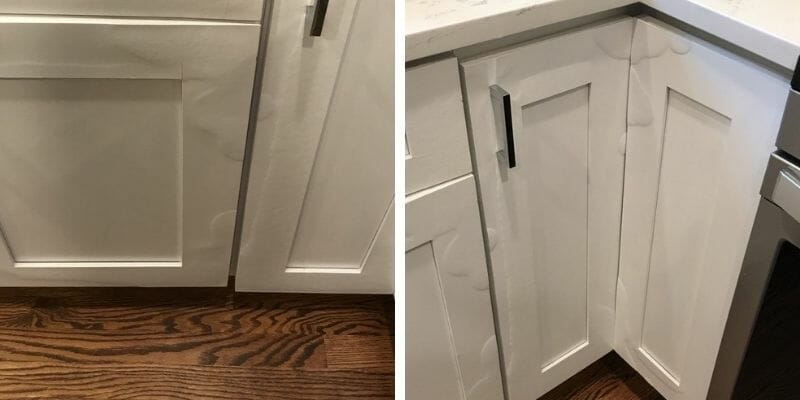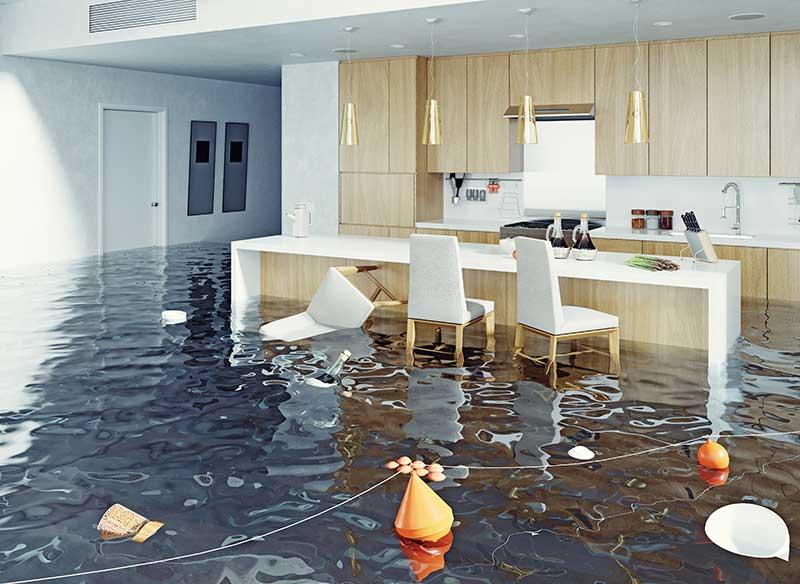Book
Right here in the next paragraph yow will discover more reliable material in relation to Causes of Water Damage in Kitchen.

The cooking area is the area where a lot of water activity goes on. You can hardly do anything without utilizing water in the kitchen area, from food preparation, cleansing, as well as doing the recipes.
Hence, examining your cooking area every so often is a requirement. Since it has a greater possibility of obtaining water damage due to the devices you make use of there, this is.
When damaged, these devices that regulate water can make your kitchen area messy and affect the structure of your structure in the future.
So, allow's look into some sources of the water damage in the kitchen area as well as what you ought to look out for.
Some Reasons For Water Damages in the Kitchen area
These are a few sources of water damage in the kitchen area.
Faulty Drain Piping
Drain Pipelines are needed parts of our houses, specifically in our kitchens and bathrooms. They obtain defective by getting obstructed, broken, and also burst. Or worse, they can be incorrectly or loosely attached; whichever the case might be, it can be a serious problem.
Malfunctioning drain pipelines can cause water damage and also, consequently, create mold development as well as injure the look of your wall surface. It can likewise make the damaged area look unpleasant.
It is a good idea always to inspect to make certain that all the pipes are in excellent condition as well as obtain a sound pipes system to maintain as well as deal with any type of concerns.
Faulty Kitchen Area Sink
The cooking area sink is an important as well as most utilized part of the cooking area. It is vulnerable to water damage; damages such as blocked pipelines, leaky pipes, as well as damaged faucets.
These damages can be frustrating, especially when one is busy in the kitchen area. It does not simply happen without providing an idea or a sign. So right here are some indications to recognize when your sink is not all right
These are the significant problems that can occur to your kitchen area sink. Nevertheless, one way to stop this damages is by making certain that food fragments do not enter the pipelines. You are additionally examining the taps as well as pipes and ensuring that it is effectively taken care of as well as in good condition.
Leaking Dish washer
Dish washers make life in the kitchen area easier. Nonetheless, it is an optional kitchen area appliance and also, when offered, can be a source of water damage. Furthermore, like other equipments, it will certainly develop mistakes in time, even with upkeep.
One of the mistakes is dripping through the door or under the dish washer. These faults develop as a result of age, cracks, incorrect usage, loosened links to pipelines, and so on.
Faults because of age come from continual usage. Therefore, the door leaks as a result of shutting as well as opening up.
Likewise, mistakes from the wrong use may create water damage by introducing cracks to it. It is recommended to adhere to the manual guide of the dishwashing machine to stop this particular damages.
The leaks under the dishwashing machine can originate from cracks in the gasket, pipe, and loose or incorrect link to water pipes or drains.
This sort of leak typically goes undetected and can be there for a very long time. Due to the time frame, it might create and also damage the floor mold and mildew development.
More so, the longer the water stays, you will certainly see the bending of the floor where the dishwashing machine is. This is an excellent indicator to look out for when inspecting if your dishwashing machine leakages. Detecting and fixing this on schedule stops significant water damage to your floor covering.
Bottom Line
Looking out for damages in your kitchen area can be charging however essential. It makes your job there less complicated and safer.
The reasons detailed above are just a few factors to consider, especially if your kitchen has a lot of appliances.
Get a professional plumbing service to come about and also examine for any kind of damages as well as get them fixed.
It makes your kitchen location damp as well as untidy, especially when dripping from the pipes. And also if it is dripping from the faucet, it leads to water wastage.
It is an optional cooking area device and also, when readily available, can be a resource of water damage. A lot more so, the longer the water stays, you will notice the warping of the flooring where the dish washer is. Identifying and also repairing this on time stops major water damage to your flooring.
WAYS TO PROTECT YOUR KITCHEN FROM WATER DAMAGE
The kitchen is one of the most significant rooms in your house, as it is a multipurpose room wherein you can do your cooking and cleaning. Nowadays, homeowners tend to ignore the problems under their sink or appliances because of their busy schedules. However, most household floods occur due to plumbing and appliance failure. One of the most common scenarios that cause water damage to your kitchen is when the dishwasher malfunctions and floods gallons of water.
Water damage in your kitchen can cause several problems, including cosmetic damage, mold growth, and even an unpleasant smell. Often, if you fail to neglect the problem, there are always consequences. This article will help you protect your kitchen from water damage.
Common Causes of Water damage in your kitchen
Pipe problems are the most common source of water leaks under your sink. If homeowners ignore this issue, it will burst and flood the kitchen. Dishwasher leaks can be a source of water damage in your kitchen. An old, broken, and defective dishwasher can cause leaks, damage to your floor, and even mold growth. Refrigerator leaks can cause water damage in your kitchen, as sometimes melted ice from defrosting can cause leaks. Furthermore, if your refrigerator has internal problems, it is very likely to cause water damage. Back-splash and sink caulking can cause discoloration and water damage to your countertop tiles. Ways to Protect Your Kitchen From Water Damage
Regular maintenance
The most important thing you can do to protect your kitchen from water damage is to inspect the sinks, drains, and pipes, as well as the kitchen appliances, regularly. As with the sink, check for missing or deteriorated caulk. Remove the old caulk and clean the area thoroughly and re-seal it with fresh silicone. Furthermore, sweep the drain regularly, empty the filter and dispose of the debris in the garbage, and inspect the supply lines and valve for cracks.
Check your appliances
Check the user’s manual for instruction and proper use of every water-related appliance installed in your kitchen. For the dishwasher, check this procedure to prevent the dishwasher from flooding your kitchen. Check the appliances that need water, such as the coffee maker, ice maker, and water cooler, as they can become the cause of water damage in your kitchen. You may call a professional to check and repair damaged appliances and professional restoration for water damage clean-up.
Garbage clean-up
Fats, oil, and grease are common in the kitchen. Pouring them down the drain can cause clogs and sewage backup, which may result in significant kitchen water damage. If your kitchen sink is clogged, use a solution of hot water, baking soda, and vinegar to unclog the fats and oils in the pipes. Also, make sure to throw out the debris in the trash and clean the sink properly using paper towels for greases and oil and soap or bleach solution for the sink itself.
Shut off your water line
Make sure to shut off your main water line, especially if you're away and having some flood issue. As mentioned, dishwasher leaks are one of the most common culprits of water damage in the kitchen. So, make sure to only use the dishwasher if someone is at home and available to attend in case a problem arises.
Furthermore, it is also important that every member of your household knows where the shut-off valves are located. So in case of an emergency, they can mitigate the damage by turning off the water source.
Install leak detectors
One of the best ways to catch water damage before it could even cause serious damage to your home or business is by installing a water or leak detector. A leak detector monitors the flow of water through a pipeline, can detect moisture in the air for molds, and tracks the water temperature. Also, it can shut off your water line in case of an emergency. Install leak detectors under the kitchen sink, near the dishwasher and refrigerator.
https://superiorrestore.com/7-ways-to-protect-your-kitchen-from-water-damage/

I recently found that blog post on Most Common Causes of Residential Water Damage while looking around the internet. Don't hesitate to set aside a second to share this entry if you enjoyed it. We truly appreciate reading our article about Water Damage in Kitchen.
Book